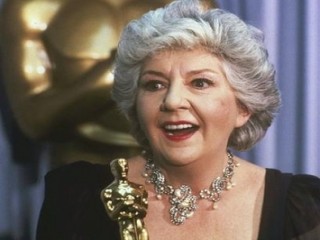
Maureen Stapleton biography
Date of birth : 1925-06-21
Date of death : 2006-03-13
Birthplace : Troy, New York, United States
Nationality : American
Category : Famous Figures
Last modified : 2011-09-19
Credited as : actress, Cocoon,
0 votes so far
Stapleton was born to a working-class Irish family in Troy, New York, in 1925. Her father, an alcoholic, left the family when she was five. She often turned to the movies and dreamed of being an actress as an escape.
In 1943, after she graduated from high school, Stapleton took the classic path of many young actors before and since: She set out for New York City, hoping to succeed as an actress. She enrolled in the New School and studied drama with teacher Herbert Berghof while working various jobs, from hotel bookkeeper to nude model for artists. In 1946, she debuted on Broadway with a small role in a revival of The Playboy of the Western World , then appeared in Harold Clurman's direction of Bird Cage by Arthur Laurents. In 1947, she joined the Actors Studio, where she befriended other young actors destined for fame, including Marlon Brando and Montgomery Clift.
Her breakthrough came in 1950, when she won the lead role in the Tennessee Williams play The Rose Tattoo . Williams had Italian actress Anna Magnani in mind to play the role of widow Serafina delle Rose, but Magnani declined, afraid her English was not good enough. The producers were unable to find an actress for the part until Clurman recommended Stapleton. She won the part after repeated auditions. Stapleton appeared opposite Eli Wallach, a friend of hers from acting school. Stapleton played an Italian-American widow, and Wallach played the truck driver who convinces her to love again. When the play opened in February of 1951, New York Times reviewer Brooks Atkinson raved about Stapleton's performance, especially her ability to portray both Serafina's earthy, coarse nature and her emotional breakthroughs. Stapleton won her first Tony Award for her performance in 1951.
The stress of such a major role led Stapleton to drinking, a habit that plagued her for years. She also had to seek therapy for her anxieties, which included paranoia that someone in the audience would kill her and fears of elevators and airplanes. Meanwhile, she married Max Allentuck, a manager for a theatrical producer. They had two children, Daniel and Katharine. She also starred in two more Williams plays, 27 Wagons Full of Cotton in 1955 and Orpheus Descending in 1956. With Orpheus , Stapleton again won the role after Magnani declined it. Though that play earned mixed reviews, critics praised Stapleton for her work as the female lead, Lady Torrance.
Hollywood beckoned Stapleton in the late 1950s, and her first film role, in 1958's Lonelyhearts , an adaptation of the Nathanael West novel Miss Lonely-hearts , earned her an Oscar nomination for best supporting actress. However, her personal life became increasingly troubled. She and Allentuck divorced in 1959, and she began dating her future second husband, David Rayfiel, a playwright, but drank more heavily and gained weight, feeling guilty over her divorce. Her marriage to Rayfiel lasted only three years, and she spent time in a hospital for alcohol rehabilitation and a psychiatric facility. At age 43, she began a ten-year relationship with George Abbott, a famous Broadway director who was 81 at the time.
The romance finally ended when the elderly Abbott began seeing another woman who was younger than Stapleton.
A mid-1960s revival of The Rose Tattoo helped Stapleton launch a comeback. She won an Emmy in 1967 for Among the Paths to Eden , a television adaptation of a Truman Capote story. In 1970, she was again nominated for an Academy Award for her work in Airport . She won her second Tony Award for her role in Neil Simon's play The Gingerbread Lady , in 1971. She won an Emmy for 1975's Queen of the Stardust Ballroom , about a couple who fall in love at a dance hall, and was nominated for an Oscar for her appearance in the Woody Allen film Interiors in 1978. Finally, her fourth Oscar nomination, for playing famous anarchist Emma Goldman in the 1981 Warren Beatty film Reds , led to an Oscar for best supporting actress. The same year, she received a Tony nomination for The Little Foxes , in which she performed with Elizabeth Taylor. Stapleton can "conjure abject terror out of silence and thin air," raved Frank Rich of the New York Times in his review of The Little Foxes , as quoted by Robert Berkvist of the New York Times .
After her work on Reds , Stapleton took occasional movie roles in the 1980s, including Cocoon , in which she played one of several senior citizens rejuvenated by encounters with space aliens. She moved to Lenox, Massachusetts, after her grandchildren were born so that she could be closer to them and her daughter. She had a few acting roles in the 1990s, including the part of a woman dying of ovarian cancer in Last Wish , a 1992 television drama; and one in the 1994 film The Last Good Time . Her last film appearance was in Living and Dining in 2003. Her autobiography, co-written with Jane Scovell, was published in 1995. Ever witty, Stapleton humbly minimized her success.
Stapleton died on March 13, 2006 of complications from respiratory ailments at her home in Lenox, Massachusetts. She was 80. She is survived by her daughter, Katharine; her son, Daniel; her brother, John; and two grandchildren.
















